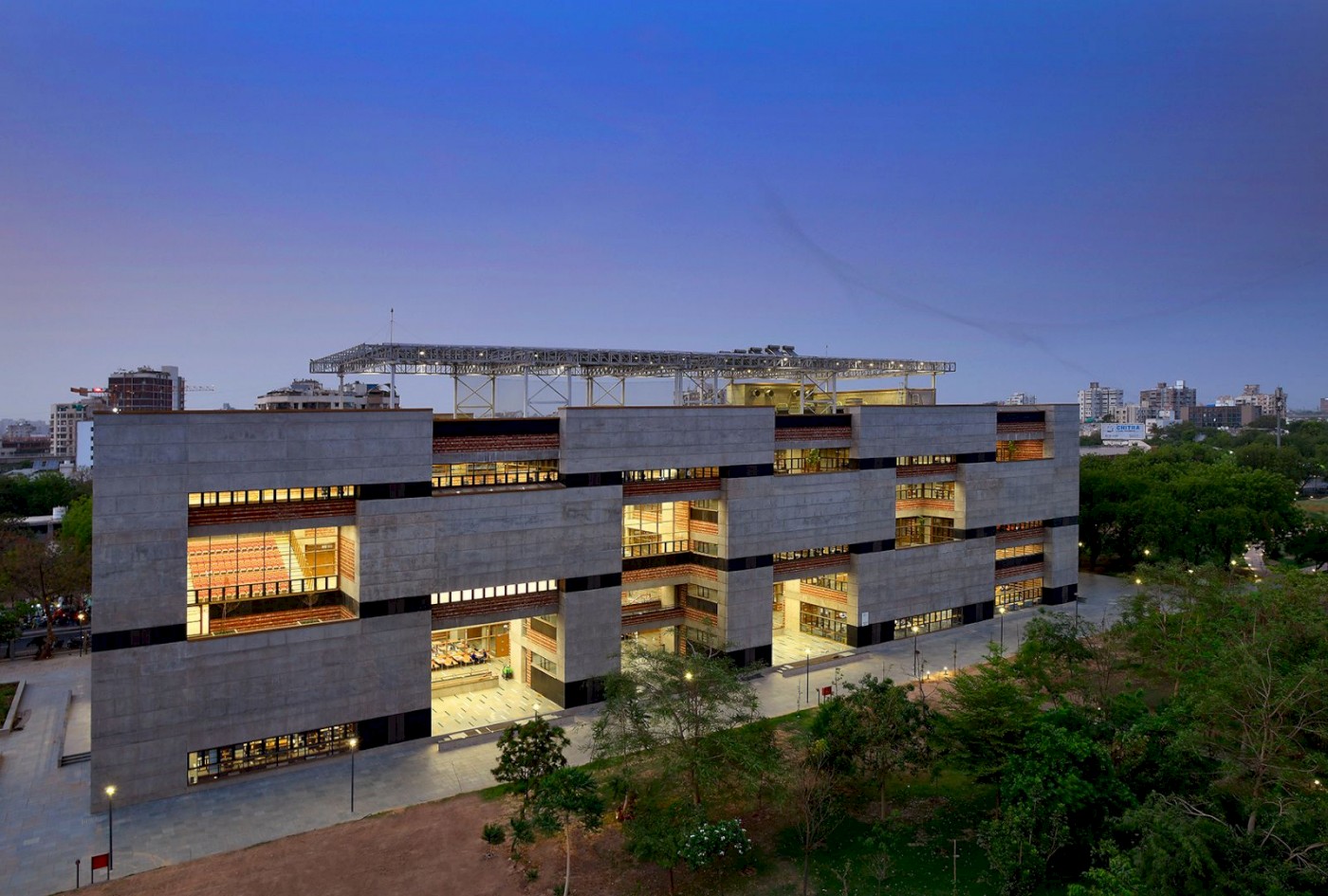
What is the role of academic architecture? Vice Chancellor Pankaj Chandra writes about the intangibles of creating academic facilities and spaces, the value they provide, and the perspectives they build.
Once, at a public institution, a government audit organisation questioned me for under-utilising academic facilities and building spaces that were categorised as “not productive”. It got me thinking about the value that campuses and, particularly, academic architectures provide. The Lishman-Ganga Ram-Jwala Prasad campus design in Banaras in the shape of a swan with its feathers outspread represents the utmost care given to integrating campus life with traditional Indian motifs, the Louis Kahn corridors in Ahmedabad and the shifting lights therein provide a sense of predictable change, and the Balkrishna Doshi pergolas in Bangalore and its open multilevel spaces evoke a sense of purpose and engagement with the imagination of a student in deep thought. How does one value such timeless spaces and architecture and, often, their unintended outcomes?
Academic buildings provide a perspective on how educational institutions define their engagement with the purpose and soul of the institution - the building of a student’s mind, its values and their inter-relationship, as well as the space for imagination by its faculty. Spaces in and around academic buildings are pathways to building individual perspectives through a common purpose – learning. It reflects the larger society’s expectation on the making of a beautiful mind in the service of society. At the Court Meeting at Banaras Hindu University in 1920, Annie Besant said the following after seeing its campus and the first set of academic buildings: “These buildings will make your university a foremost institution in the world. Universities are made by love, love of beauty and learning. We want beauty of form, beauty of colour, beauty of place, in short beauty of everything.”1
Architecture must complement an institution’s academic aspirations. It has to foster reflection, it has to be connected, and it must allow people to think, do, and behave differently. They are meant to facilitate the integration of ideas in the creation of new ones. Academic architecture must be a combination of the soulful Raag Malkauns and the compassion-evoking Guernica to spiritually lift a young mind towards the purity of purpose and the integrity of effort. They become means to help people change – change their behaviour, change their perspective, change their relationships with the society in which they exist – of course, the expectation is that it would be a positive change.
At an elementary level, how buildings are shaped and kept helps people change their behaviour towards resources, understand how to take care of facilities, and respect those who build and manage them. At Ahmedabad, this is an important objective – respect for the joy of work and those who are engaged with it. It is also the passing-on of a responsibility to behave in the same enlightened way when young graduates step out into society outside these campuses. Can we leave a place better than how we found it? It is about building citizens for a nation, one of the most important purposes of education.
So, there are very distinct purposes of academic architecture; they are not vanity projects when done with pure intent. Grounded in philosophical beliefs, they reflect our educational philosophy and purpose – to foster continuous progress of self and society. This is reflected in our three new recent projects at Ahmedabad, the distinctive School of Arts and Sciences brings interdisciplinary education to the front; the renovated Amrut Mody School of Management’s heritage art-deco building brings almost a 90-year-old history of education in Ahmedabad alive; and the amazing University Centre sends a message that vibrant and meaningful learning outside the classroom must complement that inside. This is what transformative education is about! This is the value of academic buildings and their architecture.
1 Maini, SK, Pandey V, and Chandramouli, K, 2011, Visionary of Modern India: Madan Mohan Malaviya, New Delhi: Roli Books, pp. 120.